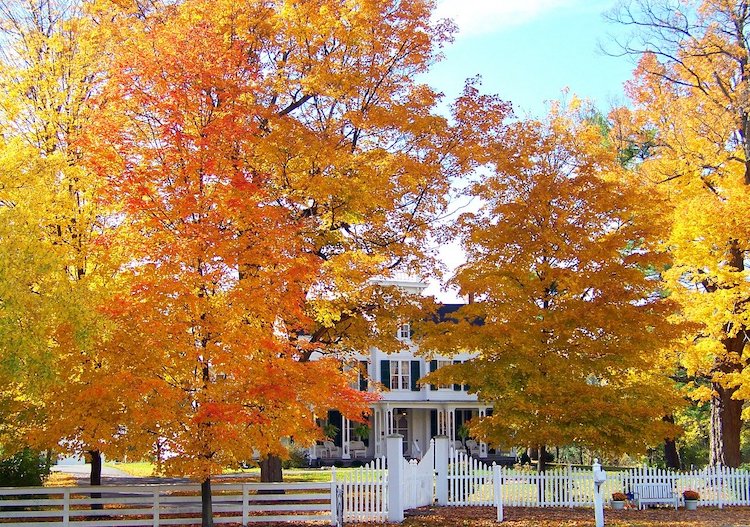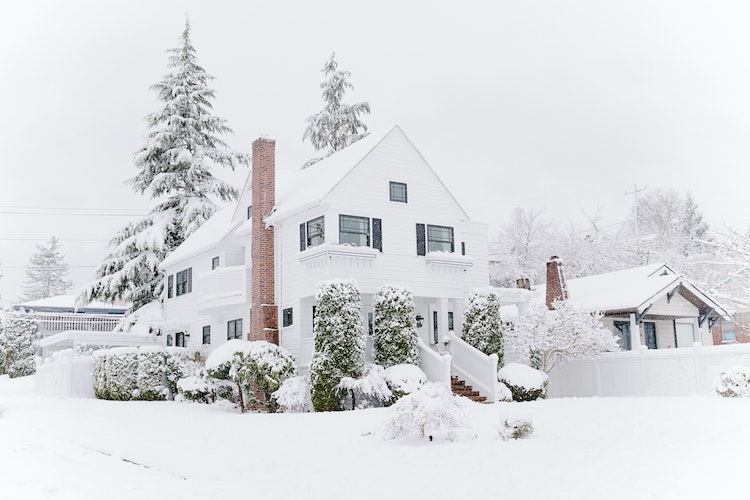How to Sell a House in Fall or Winter
Real estate sales fluctuate with the seasons, as buyers tend to be more active in warm weather. But deals still happen in cold months. Here’s how to sell a house in fall or winter.
Believe it or not, there’s a selling season when it comes to real estate.
The period from April to June is historically the ideal time to sell a home. But economic issues and mortgage interest rates can make spring a less than ideal time to put your home on the market.
There are also regional factors to take into account. If you live somewhere warmer, like Southern California, the selling season may last longer simply because of the temperature.
Even with an average season for selling homes, remember that you can sell any time. A sub-optimal time of year shouldn’t dictate whether you choose to sell a house in fall or winter, especially if you have additional challenges making it harder to sell. In those cases, waiting for the “off-season” may prove more profitable.

How to sell a house in fall
Fall is almost the middle ground where selling a home can be unpredictable. You’re close enough to warmer months where people may still actively search for a new home. You’re also heading into colder weather (and shorter daylight hours), which serves as a deterrent. If you list in fall, expect fewer showings and less motivation for buyers to outbid each other by going over your asking price.
That being said, keeping your home prepared for a fall sale can make all the difference.
Keeping everything in working order
Most of us aren’t thinking about how well the heater in a home works when house shopping in the spring. Come fall, it’s on the forefront of our minds. Now isn’t the time to have a broken heater, so even if you aren’t using it just yet, check to make sure things are functioning and in good working order.
The last thing a buyer wants is to move into a new house in winter and be left without heat. Anyone looking at your home before it’s repaired may feel too chilly to get comfortable with the idea of calling your house their home.
Rethinking key selling features
It’s a given that most homebuyers are looking for certain features all year round. However, fall reminds them of something else they may want in a home — a fireplace. If you have one, show it off. Now is that time when people realize what a nice addition a fireplace is.
Make sure you’ve cleaned it out. Dust and dirt can build up during the warmer months when a fireplace isn’t in use. Consider staging the area around your fireplace too. This helps make it a focal point.
If possible, keep your fireplace lit during showings to create that warm, cozy feeling you want homebuyers to remember.
Related: Most Popular New House Feature in Every State
Dealing with scheduling complications
Even if your home is in perfect shape for a fall sale, the season is such a busy time for everyone, and selling a home can get a little more complicated. It may become harder for people to show up when they say they’re coming to view your home. You’ll need to have a little more flexibility about ducking out for a showing.
The commitments of children’s activities, guests coming in for holidays, and the added obligations of going back to school can impact everyone. You may find your real estate agent is busier, and harder to get in touch with when you need them. This may lead to you having to pick up a little slack to get your home noticed, maybe even host your own open house.

How to sell a house in winter
The cold months between December and March make for a time where many stay indoors as much as possible. That means you have to really catch their eye if you’ve decided to put your home on the market. This is entirely possible if you know the weaknesses winter puts on a home’s appearance, and have strategies in place to address them.
Capturing your home’s best side
One of the reasons selling a home in winter is harder is because you lose curb appeal. All the pretty shrubs, trees, and flowers out in the spring are gone. Instead, you’re left with bare branches and brown grass. Snow on the ground may even cover what little greenery you have left if you have pine trees on your property. Taking pictures of the outside of your home in this condition does not capture its particular beauty. It can make homebuyers less interested.
It’s hard to remedy this issue unless you’re able to think ahead. If there’s any chance, you’ll want to sell your home during the colder months of the year, take some exterior photos during the previous spring or summer. There’s no reason you can’t use photos a few months old of your home when it’s time to sell.
If that’s not possible, do what you can to keep your yard free of leaves. Continue mowing your grass to keep it looking neat. Stay on top of general yard upkeep to maintain the best curb appeal possible.
Letting in the light
Winter is also a hard time to sell a home because of the lack of natural light available. During the coldest months, there’s less than 12 hours of daylight in most places. December 21 is the shortest day of the year with Hawaii having the longest “day” at just under 11 hours. You’re working at a deficit, especially when you consider many people look at homes after the workday is over.
This shortage of natural light can change the way your home looks, making more dark corners and unflattering shadows. Pictures won’t show the true essence of your home and potential buyers may feel closed in when on a tour.
The best remedy is more artificial light if you have the space for it. Adding a few more lamps inside the home and installing some landscape lighting outside can help cover for the lack of sunshine.
Toning down the holiday spirit
It’s a tried-and-true tip when selling your home to play down your personality and create a space that’s more generic. That way, potential buyers can more easily visualize themselves in the home. Unfortunately, nothing shows your personality more than holiday decorations.
If you like to go big for the holidays, you may end up with a house that gives off a cluttered vibe, especially if the people looking at your home prefer a more subtle approach. If you celebrate a holiday that they don’t, it may also feel overwhelming to deal with the decor.
Decorations also distract from the bones of a house. You don’t want people looking at your holiday lighting scheme or that giant tree instead of checking out the layout of the living room.
If your home is on the market during a major holiday, take a minimalist approach to decorating. Consider only a few, tasteful touches. Keeping your holiday lights off during showings also helps downplay decorations.
Do you need to sell a house in fall or winter?
Because people look for homes in any season, there’s no wrong time to sell your home, if you’re ready. That’s the key, according to USA Today. You should list your home when you’re confident it’s ready to wow prospective buyers. This is easier said than done, considering the time and potential cost necessary to get a home ready for market.
From staging to general repairs, you may be ready to sell before your house is, and that’s okay. Selling your home off market makes it possible to get an offer on your house even if it’s in a less-than-perfect state.
At Sundae, we help sell in any season, and our process makes it easy on sellers who may feel extra pressure to prepare their home in fall and winter. We buy homes as-is, which means no staging and no repairs needed. If you’re worried about your HVAC pulling through the winter, it’s okay. We’ve got you covered.
By getting your property in front of hundreds of local investors, we help you get the highest possible price. Properties on our platforms receive an average of 10 offers. Let hundreds of investors compete to get you the best price. We then work with you throughout the entire buying process to ensure you have a comfortable experience.
Ready to Get Started?
Sell as-is. Pay zero fees to Sundae. Move on your time. No repairs, cleanings, or showings.
